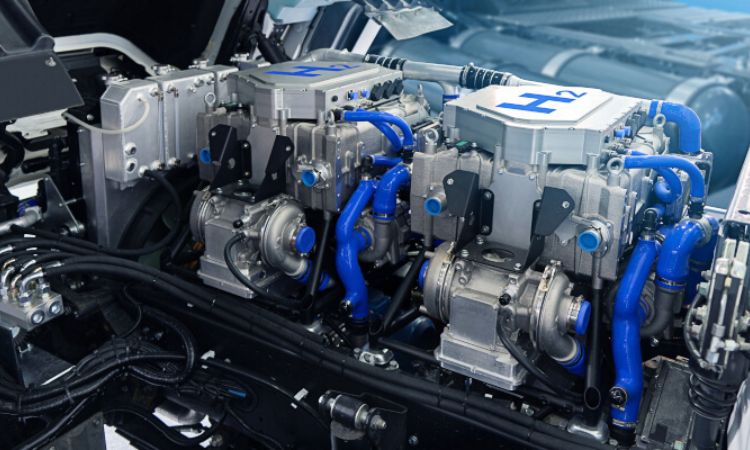Exploring the Protonic Ceramic Fuel Cell Market: Trends, Growth, and Future Outlook (2024-2032)

The quest for sustainable energy solutions is at the forefront of global innovation, particularly in the fuel cell sector. Among the various technologies, protonic ceramic fuel cells (PCFCs) are gaining significant attention due to their potential for high efficiency and low emissions. The protonic ceramic fuel cell market size is estimated to grow at a CAGR of 25.30% in the forecast period of 2024-2032. The major market drivers include increasing demand for sustainable and clean fuels, and heightened research and development of protonic ceramic fuel cells. In this blog post, we will explore the market size, segmentation, regional insights, dynamics, and future outlook for PCFCs.
Market Overview
Protonic ceramic fuel cells are electrochemical devices that convert chemical energy directly into electrical energy. Utilizing a solid ceramic electrolyte, these cells operate at high temperatures, which enhances their efficiency and broadens the range of fuels that can be used, including hydrogen and natural gas. Developed over the last few decades, PCFC technology has matured, making it an attractive option for various applications ranging from transportation to utilities.
Market Size and Share
As the global emphasis on renewable energy intensifies, the PCFC market is set for significant growth. Current estimates suggest that the market is on track to expand rapidly, driven by the urgent need for low-emission energy solutions. The robust growth forecast reflects a substantial shift in consumer and industrial preferences towards cleaner energy sources.
Compared to other types of fuel cells, such as Proton Exchange Membrane Fuel Cells (PEMFC) and Solid Oxide Fuel Cells (SOFC), PCFCs are distinguished by their high efficiency and versatility in fuel choice. While PEMFCs dominate in the transportation sector due to their quick start-up times, PCFCs offer unique advantages for stationary power generation and other applications.
Market Segmentation
By Type
The PCFC market can be segmented into several types:
- PEMFC (Proton Exchange Membrane Fuel Cells): Commonly used in automotive applications, these cells operate at low temperatures.
- AFC (Alkaline Fuel Cells): Known for their efficiency, they are often used in aerospace applications.
- MCFC (Molten Carbonate Fuel Cells): These high-temperature cells are suitable for large-scale stationary power generation.
- SOFC (Solid Oxide Fuel Cells): Operating at very high temperatures, SOFCs are ideal for industrial applications.
- DMFC (Direct Methanol Fuel Cells): Particularly useful in portable applications, such as laptops.
- PAFC (Phosphoric Acid Fuel Cells): Widely used in commercial and industrial settings.
Each type of fuel cell serves specific market needs, contributing to the overall growth and diversification of the industry.
By Application
PCFCs find applications across various sectors:
- Transportation: As electric vehicles (EVs) gain traction, fuel cells are increasingly viewed as a complementary technology, especially for heavy-duty and long-range applications.
- Military: The demand for reliable and efficient power sources in military operations boosts the use of PCFCs.
- Utilities: With a global shift towards renewable energy sources, PCFCs are being deployed for grid stability and backup power.
- Others: Emerging applications include residential energy systems and portable power solutions.
The transportation and utilities sectors are poised for the most significant growth, driven by increasing regulatory support for clean energy initiatives.
Regional Analysis
The PCFC market is influenced by geographical factors, with key regions showing distinct growth patterns:
- North America: The region is a leader in fuel cell technology due to strong governmental support and extensive R&D activities. Companies are investing heavily in developing innovative PCFC solutions.
- Europe: With stringent emission regulations and a commitment to renewable energy, Europe is a significant market for PCFCs, particularly in transportation and utilities.
- Asia-Pacific: This region is witnessing rapid industrialization, leading to an increased demand for energy-efficient solutions. Countries like Japan and South Korea are at the forefront of fuel cell adoption.
- Latin America and Middle East & Africa: These regions are emerging markets with significant potential, driven by growing energy demands and infrastructure developments.
Market Dynamics
SWOT Analysis
Understanding the strengths, weaknesses, opportunities, and threats (SWOT) of the PCFC market provides insights into its future:
- Strengths: High efficiency, versatility in fuel choice, and reduced environmental impact position PCFCs as a strong competitor in the energy market.
- Weaknesses: High production costs and the need for further technological advancements may limit widespread adoption in the short term.
- Opportunities: Growing investment in R&D, favorable government policies, and increasing environmental awareness present significant opportunities for market players.
- Threats: Competition from alternative energy sources, such as battery technology and solar energy, may challenge market growth.
Porter’s Five Forces Analysis
The competitive landscape can be evaluated through Porter’s Five Forces framework:
- Threat of New Entrants: Moderate; while the market is attractive, high capital requirements and technological expertise create barriers.
- Bargaining Power of Suppliers: Low; a diverse supplier base mitigates risks.
- Bargaining Power of Buyers: Moderate; with increasing options, buyers can exert pressure for better pricing and technology.
- Threat of Substitute Products: High; advancements in batteries and other renewable technologies pose a constant threat.
- Competitive Rivalry: Intense; many established players and new entrants are vying for market share, driving innovation and competitive pricing.
Competitive Landscape
The competitive landscape is characterized by both established companies and new entrants. Key players, such as Ballard Power Systems, Bloom Energy, and Siemens, are focusing on strategic partnerships and technological innovations to strengthen their market position. Collaborations with research institutions are also common, aiming to accelerate R&D in PCFC technology.
Key Trends and Developments
Several trends are shaping the future of the PCFC market:
- Technological Advancements: Continuous R&D efforts are leading to more efficient and cost-effective PCFC solutions.
- Government Support: Incentives and funding for clean energy projects are becoming increasingly common.
- Corporate Sustainability Initiatives: Companies are integrating fuel cell technology into their sustainability goals, further driving market demand.
Future Outlook
Looking ahead, the PCFC market is expected to thrive. With the projected CAGR of 25.30% from 2024 to 2032, stakeholders must remain vigilant about emerging technologies and market dynamics. The growing emphasis on clean energy solutions and the need for efficient power generation will further solidify PCFCs’ role in the energy transition.





